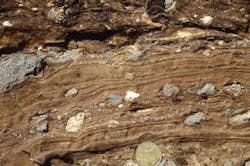3-D imaging is used to unravel Neoproterozoic puzzle
Researchers at Princeton University (Princeton, NJ, USA) aim to develop an automated serial grinder and image analysis system capable of rapidly imaging small calcareous fossils embedded within rock in 3-D.
The project involves mating an imaging system to a commercially available serial grinder and developing the machine code and imaging routines to allow for automated serial grinding and 3-D fossil image construction and visualization.
To develop the system, the researchers have partnered with a private firm, Situ Studios (Brooklyn, NY, USA), that specializes in digital design and manufacturing. They will be responsible for the development of the machine code to mate the grinder with the imaging system.
Princeton Assistant Professor of Geosciences Adam Maloof hopes that by using the system he will be able to gain new insights into how Neoproterozoic fossils of sponges found in the Flinders Range of southeastern Australia appear to have survived during a period of global glaciation.
-- by Dave Wilson, Senior Editor, Vision Systems Design
